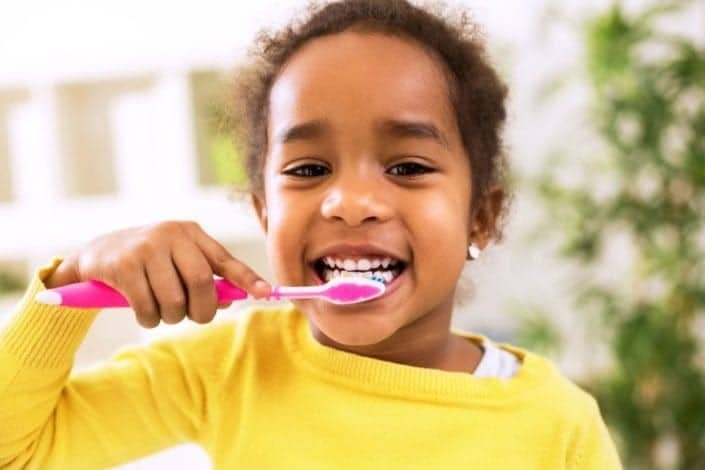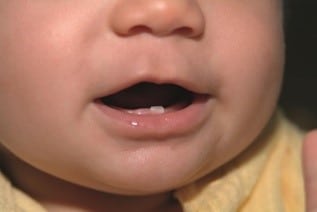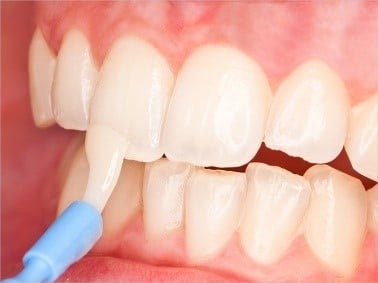Oral health in children

- How many 5-year olds have tooth decay?
- How many children between 2-19 were admitted to hospital for tooth extractions in 2014/2015?
- How much does the NHS in England spend on dental treatment per year for all primary and secondary school children?
- What are the top three interventions for preventing tooth decay?
- What is the average cost of a tooth extraction in hospital for under 5-year olds?
- Name two causes of a tooth extraction in hospital for under 5-year olds?
- How much of our daily intake of food and drink should come from free sugars?
- How much are children and adults currently consuming?
- How much of the free sugars currently consumed by 11 to 18-year olds come from soft drinks?
- What percentage of 5-year olds in England have decay on their front teeth?
Facts about child oral health in England
Although oral health is improving in England, 24.7% of 5-year olds have tooth decay. Each child with tooth decay will have on average 3 to 4 teeth affected. 5.6% of 5-year olds had tooth decay in their front teeth in 2015. This is associated with long term bottle use of sugar sweetened drinks. Tooth decay was the most common reason for hospital admission for children aged 5-9 years in 2012 to 2013. Over 63,000 children between 2 to 19 years were admitted to hospital for tooth extractions in 2014/2015. It costs on average £836 for a tooth extraction in hospital for a child under 5. In 2015 20% of 5 – year olds in South East England had tooth decay compared to 34% in North West England. Research about extractions in North West hospitals found that 26% had missed days from school because of dental pain with an average of 3 days absence.

Consequences of poor oral health
Poor oral health suggests wider health and social care issues such as poor nutrition, obesity the need for parenting support and in some instances safeguarding and neglect. Parents of children who need treatment may have to take time off work to take their children to the dentist. Dental treatment is a significant cost with NHS in England spending £3.4 billion per year on all ages primary and secondary dental care as well as an estimated additional £2.3billion on private dental care.

Risk factors
Poor oral health can be caused by many factors including:
- Social inequalities where difficulties in income, education, employment and neighbourhoods affect a child’s development
- Poor nutrition and infant feeding with high and frequent eating of free sugars
- Lack of access to fluoride including late beginning or frequent brushing with low or no fluoride toothpaste.
Regularly eating foods and drinks which have lots of free sugars increase your child’s risk of obesity and tooth decay. Ideally no more than 5% of the energy your child eats should come from free sugars. Currently children and adults across the UK are taking in about 2-3 times that amount.
Sugary drinks should not be part of your child’s diet, but they account for a large proportion of the daily intake of both children and adults. Almost one third of the free sugars consumed by 11 to 18 – year olds come from soft drinks.


Top 3 ways for preventing tooth decay
The best ways to stop tooth decay are:
- To reduce the amount of foods and drink with sugar in them that your child takes in.
- Make sure your child brushes their teeth twice a day with fluoride toothpaste (1350 – 1500 pm) last thing at night and at least one other time during the day. After brushing get them to spit and not rinse because the fluoride won’t work as well.For under 3 – year olds you should use a smear of toothpaste, while a 3 to 6-year-old should use a pea sized amount and parents and carers should brush or supervise tooth brushing until their child is at least 7. Make sure they brush the back of their teeth as well as the front and their gums.

 3. Take your child to dentist as first tooth erupts, at about 6 months and then on regular basis. This is so that they become familiar with the environment and get to know your dentist. When visiting the dentist be positive and make the trip fun.
3. Take your child to dentist as first tooth erupts, at about 6 months and then on regular basis. This is so that they become familiar with the environment and get to know your dentist. When visiting the dentist be positive and make the trip fun.
For under 3 – year olds you should use a smear of toothpaste, while a 3 to 6-year-old should use a pea sized amount and parents and carers should brush or supervise tooth brushing until their child is at least 7. Make sure they brush the back of their teeth as well as the front and their gums.
Fluoride varnish and fissure sealants
A fluoride varnish containing high levels of fluoride can be painted on to both baby and adult teeth every 6 months to strengthen their tooth enamel and prevent tooth decay. From the age of 3 children should be offered fluoride varnish at least twice a year with younger children being offered if your dentist thinks they need it.

